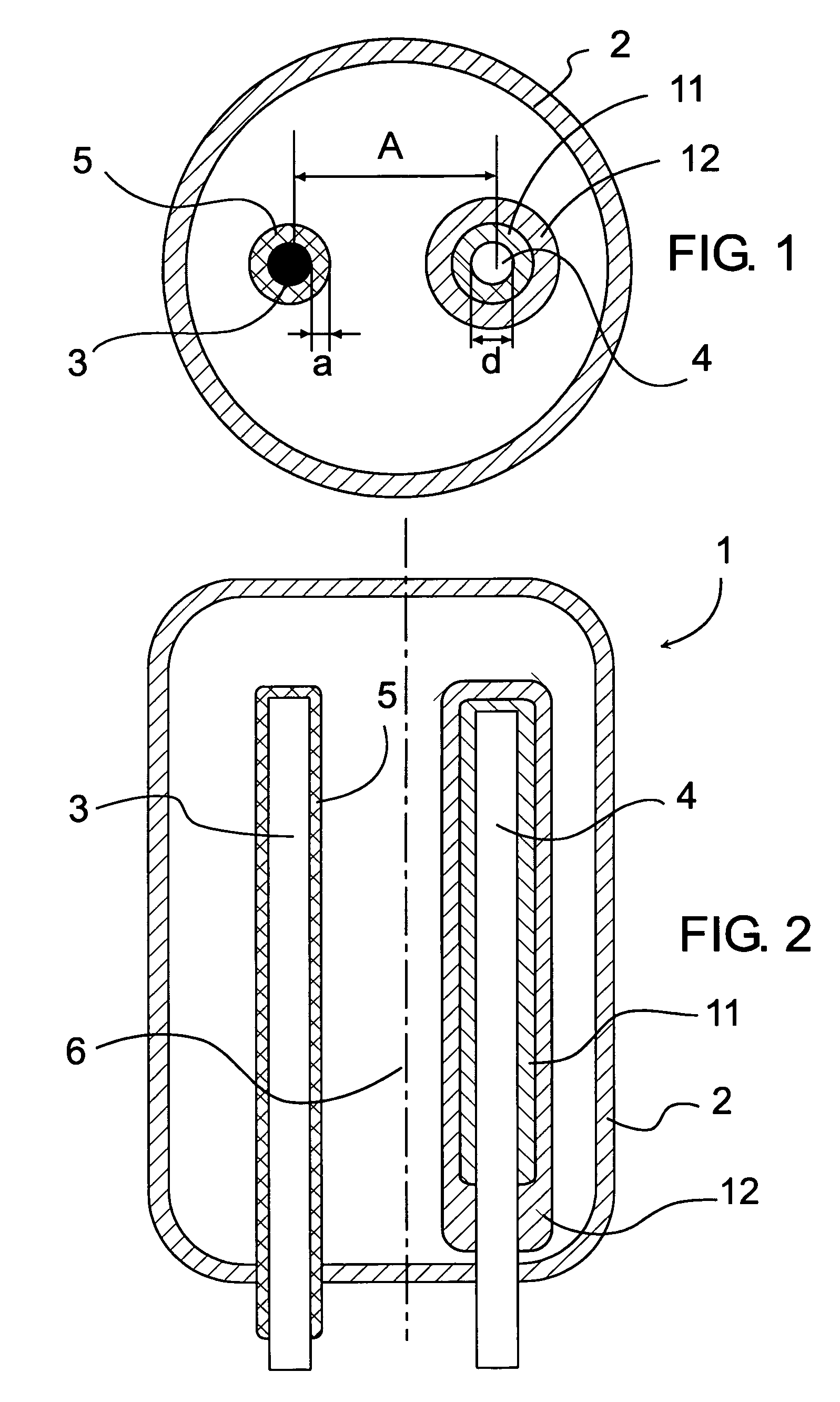Dielectric barrier discharge lamp
a discharge lamp and dielectric barrier technology, applied in the direction of electric discharge lamps, gas-filled discharge tubes, solid cathodes, etc., can solve the problems of prone to deterioration, electrode the planar lamp configuration cannot be used in the majority of existing lamp sockets and lamp housings, etc., to achieve increased efficiency, increase this effect, and increase efficiency
- Summary
- Abstract
- Description
- Claims
- Application Information
AI Technical Summary
Benefits of technology
Problems solved by technology
Method used
Image
Examples
Embodiment Construction
[0023]Referring now to FIGS. 1 and 2, there is shown schematic picture of a low-pressure discharge lamp 1. The lamp is a dielectric barrier discharge lamp (hereinafter also referred to as DBD lamp), with a single discharge vessel 2 serving also as an envelope of the DBD lamp. The discharge vessel 2 encloses a discharge volume, which is filled with discharge gas. The wall of the discharge vessel may be coated with a luminescent layer in order to convert short wave radiation of the excited gas into visible light. In the shown embodiment, the discharge vessel is substantially cylindrical and its wall forming an envelope is made of a transparent or translucent material, which may be a soft or hard glass, or any type of quartz material or any suitable ceramic material, which is transparent or at least translucent to the wavelength emitted by the lamp. A luminescent layer may cover the wall of the discharge vessel. For reason of higher security, also a separate external envelope (not show...
PUM
 Login to View More
Login to View More Abstract
Description
Claims
Application Information
 Login to View More
Login to View More - R&D
- Intellectual Property
- Life Sciences
- Materials
- Tech Scout
- Unparalleled Data Quality
- Higher Quality Content
- 60% Fewer Hallucinations
Browse by: Latest US Patents, China's latest patents, Technical Efficacy Thesaurus, Application Domain, Technology Topic, Popular Technical Reports.
© 2025 PatSnap. All rights reserved.Legal|Privacy policy|Modern Slavery Act Transparency Statement|Sitemap|About US| Contact US: help@patsnap.com



